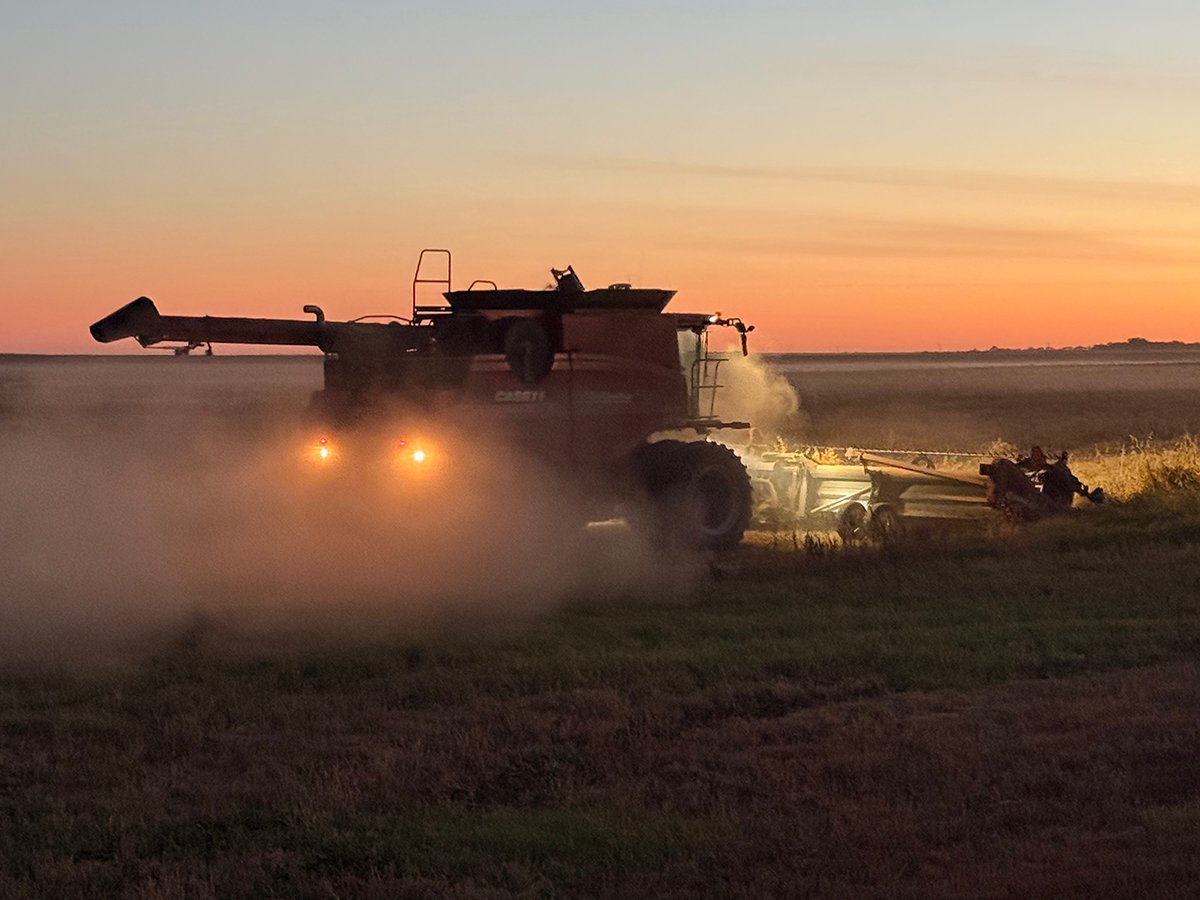Seasonal decorations
One of the pleasures of Christmas is the colorful decorations, but when it’s over and the decorations come down in January, the house seems drab without them.
A friend of mine, Debbie Bodnarchuk, has some solutions. She hangs an artificial evergreen wreath on her front door with seasonal decorations. The Christmas theme has a holiday greeting, miniature presents and decorations. Last week she had the wreath decorated with hearts, a big red bow and Valentine greetings from special cards.
Debbie said she has bought inexpensive decorations to suit each season. She stores each season’s decorations in separate ziplock bags ready to change with the seasons.
Read Also

Downturn in grain farm economics threatens to be long term
We might look back at this fall as the turning point in grain farm economics — the point where making money became really difficult.
Her decoration collection includes items for Christmas, St. Valentines Day, Easter, spring gardening, holidays, back to school, fall and Halloween. For the spring garden wreath she has some seed packets and a miniature rake, hoe and watering can.
Summer holiday items include a miniature sun hat, sunscreen, sunglasses and sunflower seeds. A bow, either raffia or ribbon, or streamers complete the wreath. To make decoration changes easier she has wire twist-ties attached to each. Debbie is adding some basic folk art pieces for the seasonal decorations. I am looking forward to seeing her creations.
In flipping through a McCall’s pattern catalogue I found a pattern for Miss Merry Beary that had four seasonal jackets decorated for spring, summer, fall and winter. Another idea used decorative corn brooms or flowerpots and added seasonal decorations.
One final comment about the lack of color in January. One beautiful frosty morning when all the world around seemed white, I heard a friend say that she had been admiring the frost while driving that morning and felt we are fortunate to live here because there are people who’ve never seen a totally white world.
On cold winter evenings while watching a movie or visiting friends this would make a great snack.
Taco salad dip
1Ú2 pound ground beef 250 g
1 can (19 oz.) 540 mL
refried beans
1 can (8 oz.) taco 250 mL
seasoning mix
1Ú4 cup finely 50 mL
chopped onion
1Ú4 cup finely chopped 50 mL
green bell pepper
2-3 drops red 2-3
pepper sauce
1 small clove garlic, 1
finely chopped
sour cream topping
(see next recipe)
finely shredded lettuce
shredded cheddar cheese
Crumble ground beef in 11Ú2 quart microwavable casserole. Cover loosely and microwave on high for 21Ú2 to 31Ú2 minutes or until little pink remains; stir and drain. Stir in beans, tomato sauce, seasoning mix, onion, bell pepper, pepper sauce and garlic. Cover tightly and microwave three minutes, stir.
Spread in a microwavable pie plate. Cover and microwave on high about four minutes or until hot and bubbly. Mound sour cream topping in centre of beef mixture. Sprinkle with lettuce and cheese. Serve with tortilla chips, if desired.
Makes about 31Ú2 cups (875 mL) of dip.
Sour cream topping
Mix together:
1Ú2 cup sour cream 125 mL
1 tablespoon grated 15 mL
processed cheese
1Ú8 teaspoon chili 0.5 mL
powder
Keep warm with fleece
Fleece ready-to-wear and fabrics have become popular. They are soft, warm and available in many colors and prints. They are easy to care for and to sew.
Fleece is made from 100 percent polyester yarn, the same basic synthetic fibre the 1960s Fortrel was made from.
Sherry Lukenoff, manager of the Confederation Park Fabricland in Saskatoon, shared with me how their Igloo and Sub-Ice fleeces are made. Other fleece fabrics would be manufactured using a similar process.
The yarns are made into fabric on a circular knitting machine. When it comes off the machine, it looks like a stretch terry cloth that you would see in infant wear – flat on one side and with a tiny loop on the other. The goods are either dyed to a solid color or printed.
The printing process uses a series of screens, each of which applies one color to the fabric.
After the dying and printing processes, the fabric is napped. For the napping, both sides of the fabric are passed over cylinders covered with hooked needles that pull the yarns up and fluff them out until they look like the finished product.
To create the Sub-Ice fleece anti-pill effect, the goods go through an additional chemical process plus a shearing process that leaves the fabric with a better resistance to pilling (small balls of fabric that form on the surface), as well as a more luxurious lambskin feel.
Machine washable
Because it’s made of polyester, the fabric is strong and easy to care for. It can be machine washed in cold or warm water on a gentle cycle. Because of the fleecing it has a tendency to pill. Hang to dry because using in a dryer increases pilling.
Some retailers claim their items have an anti-pill finish. This does not mean no pill. The little balls are loose fibres that can be removed with a fabric shaver.
Fleece is popular in jackets, vests, bath robes, infant wear, sweatshirts, pants, mitts, hats, scarves and gloves. For the home there are fleece blankets.
The fabric is ideal for do-it-yourself sewers, who can create a variety of craft and home decoration items, as well as clothes.
When sewing with fleece, a stretch stitch or small zig-zag stitch is recommended using a polyester thread. It can also be serged but some projects may be too bulky.
The material does not fray, so it is easy to sew and needs no seam finish, though some prefer to pink the seam edges.
It is an easy material for beginning sewers. The fabric is sold in 60 inch (150 centimetres) widths. The retail price is from $15.98 to $22.98 a metre depending on weight and anti-pill finishes. Watch for half-price sales to reduce the cost of your projects.
















